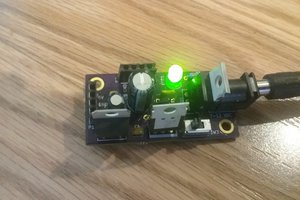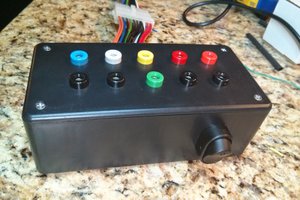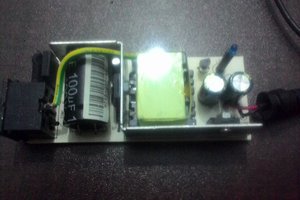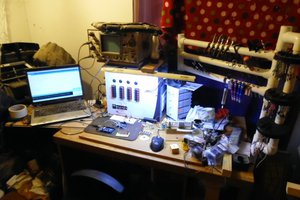Maker Your Own Professional Bench Power Supply
Maker Your Own DIY Professional Bench Power Supply Using A Old Computer PSU.
Maker Your Own DIY Professional Bench Power Supply Using A Old Computer PSU.
To make the experience fit your profile, pick a username and tell us what interests you.
We found and based on your interests.
CIrcuitP.pngPortable Network Graphics (PNG) - 28.73 kB - 03/28/2022 at 14:03 |
|
|
Circuit.pngPortable Network Graphics (PNG) - 42.63 kB - 03/28/2022 at 14:03 |
|
|
MainBodyModified.stlStandard Tesselated Geometry - 535.43 kB - 03/28/2022 at 14:03 |
|
|
MainBody.stlStandard Tesselated Geometry - 527.23 kB - 03/28/2022 at 14:03 |
|
|
FrontPannel.stlStandard Tesselated Geometry - 460.43 kB - 03/28/2022 at 14:03 |
|
|
Every workbench should have at least one power supply.
When you’re experimenting with electronics and microcontrollers a good power supply can be an essential piece of equipment. While you can certainly make do with USB power bricks and “battery eliminators” nothing beats having a dedicated power supply with plenty of voltage selection and current capability.
An ideal workbench power supply should have both 5-volt and 12-volt outputs, with 3.3-volts being a nice option as well. It should be capable of providing several amperes of current for each voltage.
You can buy bench power supplies of course, but they are not inexpensive. As the current capability and number of output voltages go up so does the price.
While a commercial bench power supply is certainly a worthwhile investment there is a cheaper solution that you might want to consider. Adapt an old computer power supply to use on your workbench.
Computer power supplies have all the voltages you’ll need and some very impressive current capabilities. And, thanks to mass production, they are cheap when compared to dedicated bench power supplies.
In fact, if you have access to an old computer that is on its way to the junk heap you can rescue its power supply and put together a nice bench power supply for just a few dollars.
That’s what I did actually – an old Windows desktop computer has now become a useful addition to my workshop.
Thank You NextPCB:
This project is successfully completed because of the help and support from NextPCB. NextPCB is one of the most experienced PCB manufacturers in Global, has specialized in the PCB and assembly industry for over 15 years. Not only could NextPCB provide the most innovative printed circuit boards and assembly technologies in the highest quality standards, the fastest delivery turnaround as fast as 24 hours.
Guys if you have a PCB project, please visit their website and get exciting discounts and coupons.
Only 0$ for 5-10pcs PCB Prototypes:Nextpcb.com/pcbprototype
4-layer PCB price reduction up to 40%: Nextpcb.com/4-layer-pcb
Register and get $100 from NextPCB: Nextpcb.com/coupon
Create an account to leave a comment. Already have an account? Log In.
Nice project. One question, why is the 50w resistor needed?
Thanks! It’s because some of the old Power Supply requires a load during the initial start, if the load is not connected they may not turn ON. This load can be required at 5V or at 12V this will be specified in description of the PSU.
Also the load maintains the constant output voltage.
>Computer power supplies have all the voltages you’ll need
Well that's if all you need are +5, +12 and +3.3 volt. If you need some other voltage, you're out of luck. Another thing missing is current limiting; this PSU has enough juice to turn a malfunctioning test circuit into smoke. Still, a good effort to recycle PSUs which would go into e-waste. I've been using one on my bench, without the nice box.
Definitely for next power supply I am going to use variable Buckcoverter and thank you for suggesting about current limiting I will consider it for the next time or if possible implement in the same.
Thank you 😌
Become a member to follow this project and never miss any updates
By using our website and services, you expressly agree to the placement of our performance, functionality, and advertising cookies. Learn More

 Jon Thomasson
Jon Thomasson
 Brian Wigginton
Brian Wigginton
 Sudarshan patil
Sudarshan patil
 cyplesma
cyplesma
Awesome project, going to be working on making one myself, one question though, what LCD did you use in the tutorial?